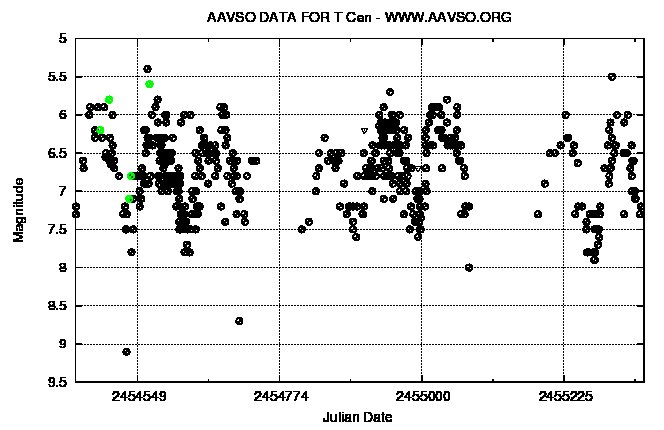
 |
Over a 900 day period we watch T Centauri go through nearly nine cycles as it varies between visual magnitudes 5.5 and 8. The green dots are photometric measures, while the others are eye estimates. Tha gaps are caused by the Sun getting in the way. The lower axis gives the Julian Day Number, a running count since January 1, 4713 BCE on the Julian Calendar. JD 2454549 is March 23, 2008, JD 2455225 January 28, 2010. Courtesy of the American Association of Variable Star Observers, AAVSO, the data contributed by observers worldwide. |